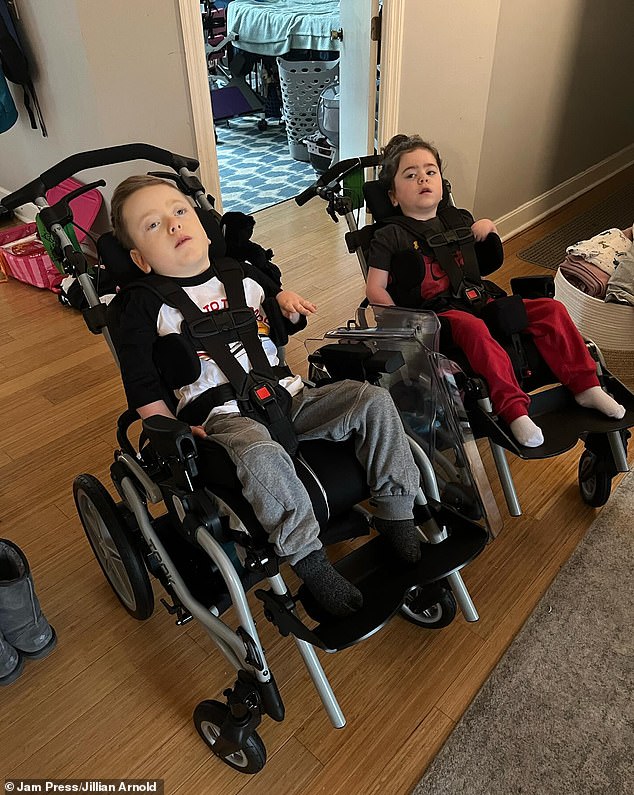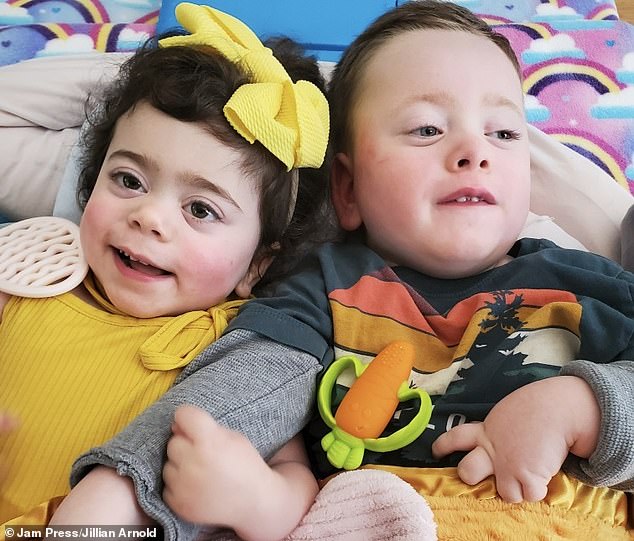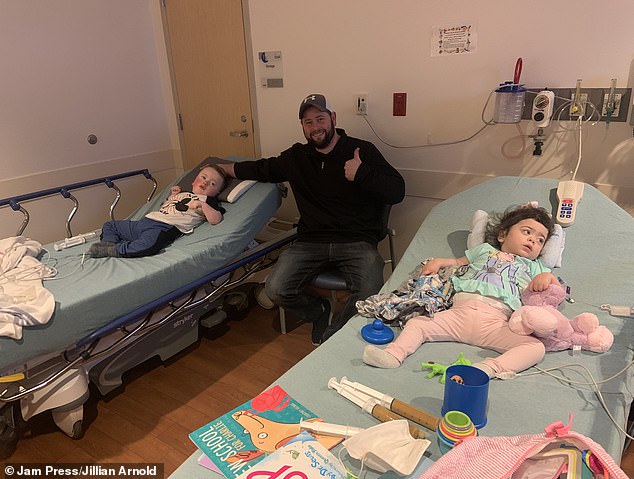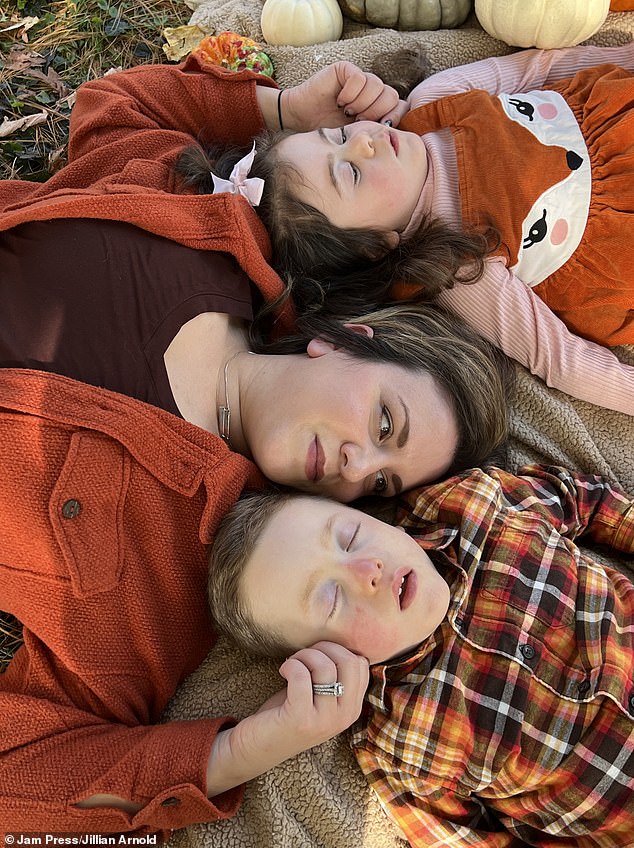Mom is devastated when both her children are diagnosed with a rare condition called ‘childhood Alzheimer’s’
An Ohio couple is dealing with the devastating news that both of their young children have a rare condition called “baby Alzheimer’s.”
Stella and Roman Arnold, aged four and five respectively, have a rare genetic condition that causes worsening neurological decline in children, similar to that experienced in adult Alzheimer’s patients.
However, Stella and Roman defy expectations as they are given a life expectancy of approximately three years. But their mother, Jillian Arnold, is already grieving for her babies in anticipation of her heartbreaking loss.
She said: ‘It’s such a strange feeling to grieve a child that you still hold in your arms. I try not to ignore those feelings when they happen, but I also try not to dwell on them.”
Stella (center left) and Roman Arnold (center right) have a rare genetic condition that causes progressive neurological decline, similar to Alzheimer’s disease in adults. They are pictured with their parents Donald (far left) and Jillian (far right)

Stella and Roman defy the odds, as they are given a life expectancy of only three years
Mrs Arnold added: ‘This disease is cruel because you get a little ‘taste’ of who your children really are – and deep down, who they still are – and then it’s all taken away from you quickly.
“It’s something I wouldn’t wish on my worst enemy.”
Roman was diagnosed with the severe type A form of acid sphingomyelinase deficiency (ASMD) at six months old.
This genetic condition causes children to experience loss of motor skills, intellectual disability, feeding problems, jaundice (screaming of the skin), and an enlarged liver and spleen.
It is characterized by a deficiency of an enzyme called sphingomyelinase. This enzyme is needed to break down a fatty substance called sphingomyelin, a crucial component of cells.
It is a crucial component of cell membranes that insulate nerves and plays an important role in cellular communication and cell death.
When these cells do not die as planned, they accumulate in various tissues of the body and affect major organs, including the liver, spleen, brain and spine.
ASMD is a genetic condition and occurs when a child inherits two non-functioning genes from his parents: one from the mother and one from the father.
There is no medicine. Instead, doctors treat the symptoms that occur as a result of having the disease.
The typical lifespan of ASMD type A patients is two to three years, and about a quarter of patients die from some form of neurodegenerative disease.

Roman (right) was diagnosed with the severe type A form of acid sphingomyelinase deficiency (ASMD) at six months old

The Arnolds have already begun mourning the loss of their toddlers, they said
Roman was behind on his milestones, like rolling over, which was the first suggestion to his parents that something was wrong.
Then he started throwing up most of his feeds. Physical examination revealed that he had an enlarged liver and spleen.
Doctors diagnosed him with ASMD, also known as Niemann-Pick disease (NPD), after a series of tests and confirmed it was the more serious type A. The condition only occurs in: 0.4 to 0.6 per 100,000 births in the world.
The personnel and services administration estimates About only 15 babies are born with ASMD in the US each year.
And if parents already have a child with ASD, they have a one in four chance of having another child with the condition.
Mrs Arnold said: ‘I felt like it couldn’t be real and couldn’t understand why this was happening to us.
“The most difficult aspect of this disease is watching your once healthy and vibrant children begin to become a shell of who they once were.”
Just days before her son’s diagnosis, Jillian learned she was pregnant again. But the news was bittersweet.

Mrs. Arnold said seeing her children go through this has tested her marriage, her faith and her mental health
A doctor told her that, given her own genetic predisposition to the disease, and that of her husband, their soon-to-be daughter would have a 25 percent chance of developing the disease.
When she was born, Stella was “fiery, motivated, strong and feisty.”
Mrs Arnold said: ‘We were so hoping she didn’t have it because she seemed so much physically stronger than Roman as a baby. She also had none of the vomiting problems he had.
“We received her diagnosis when she was about three months old, and our hearts were broken for the second time.”
Stella was also diagnosed with the more serious form of the disease type A.
She said the ordeal has tested both her marriage and her faith.
Roman and Stella are now involved in a clinical trial for a treatment candidate that has extended their survival by a few years. Ms Arnold calls this ‘a big victory’.
She and her husband started sharing their story online and on podcasts to help other parents, which has given them some comfort.
Although they will never be happy with their children’s diagnosis, they have accepted it.
Mrs Arnold said: ‘It has tested my sanity, patience and hope. But here we are, all still standing and enjoying our lives.
“I know there is a cure.”
